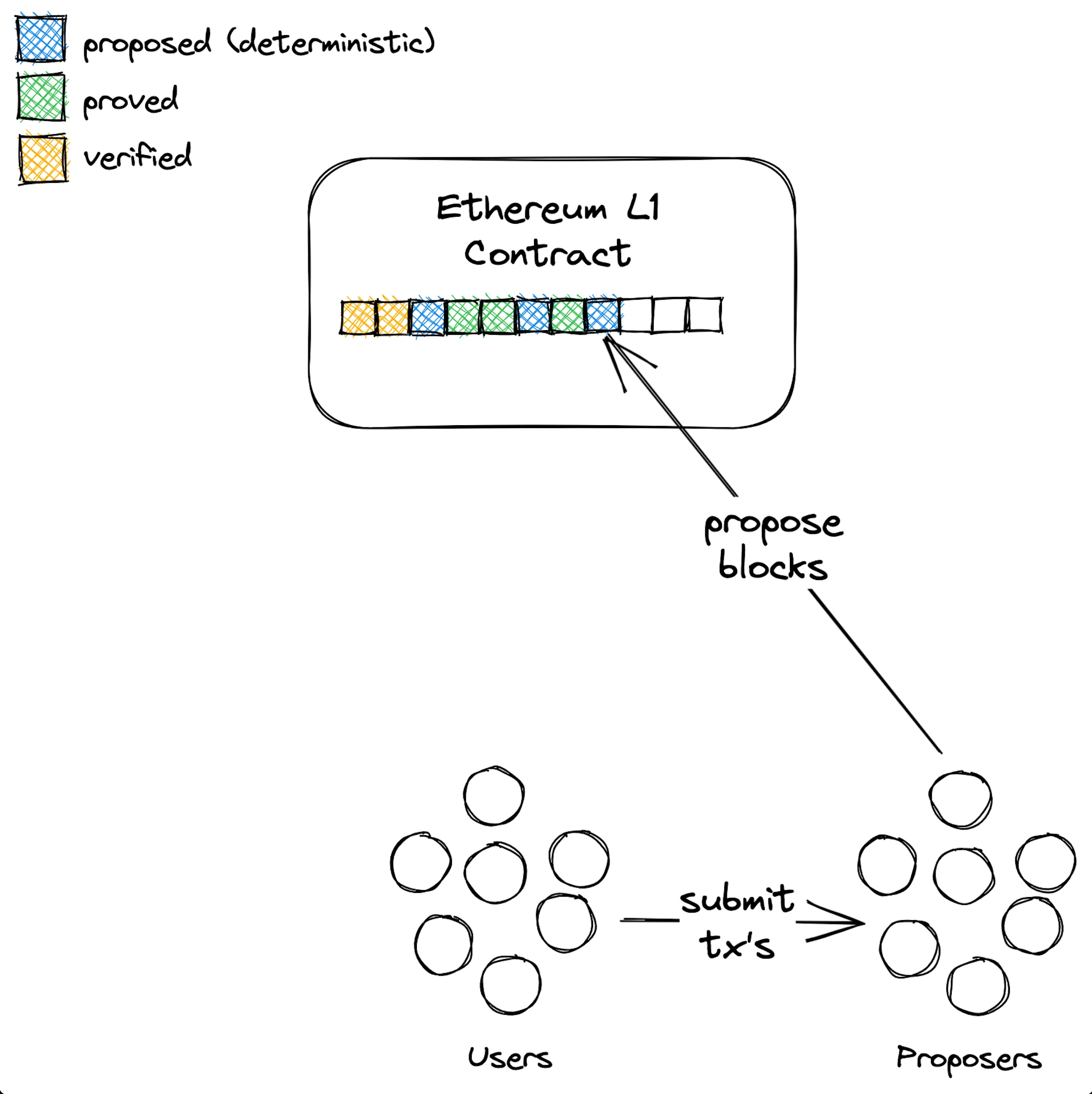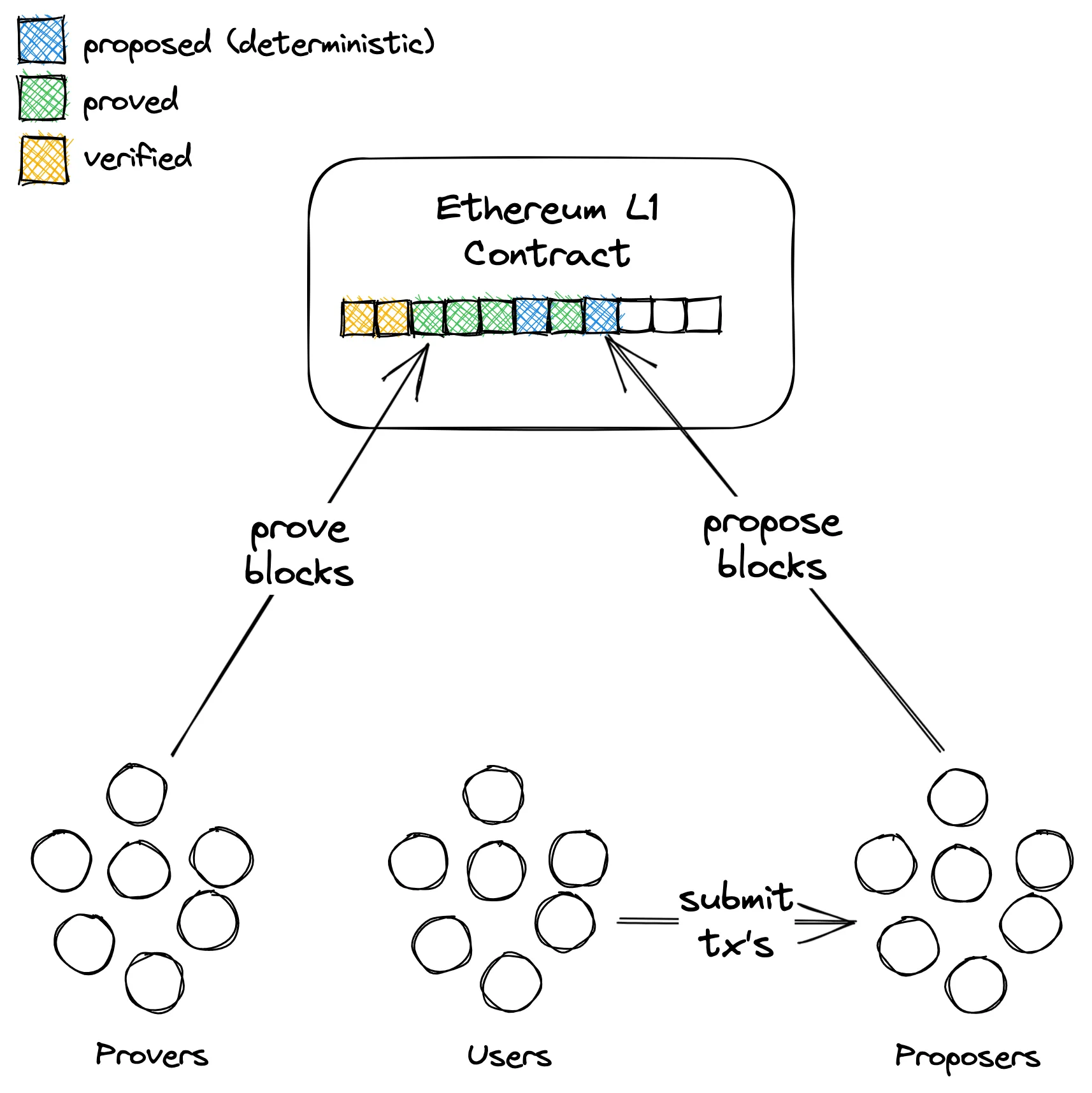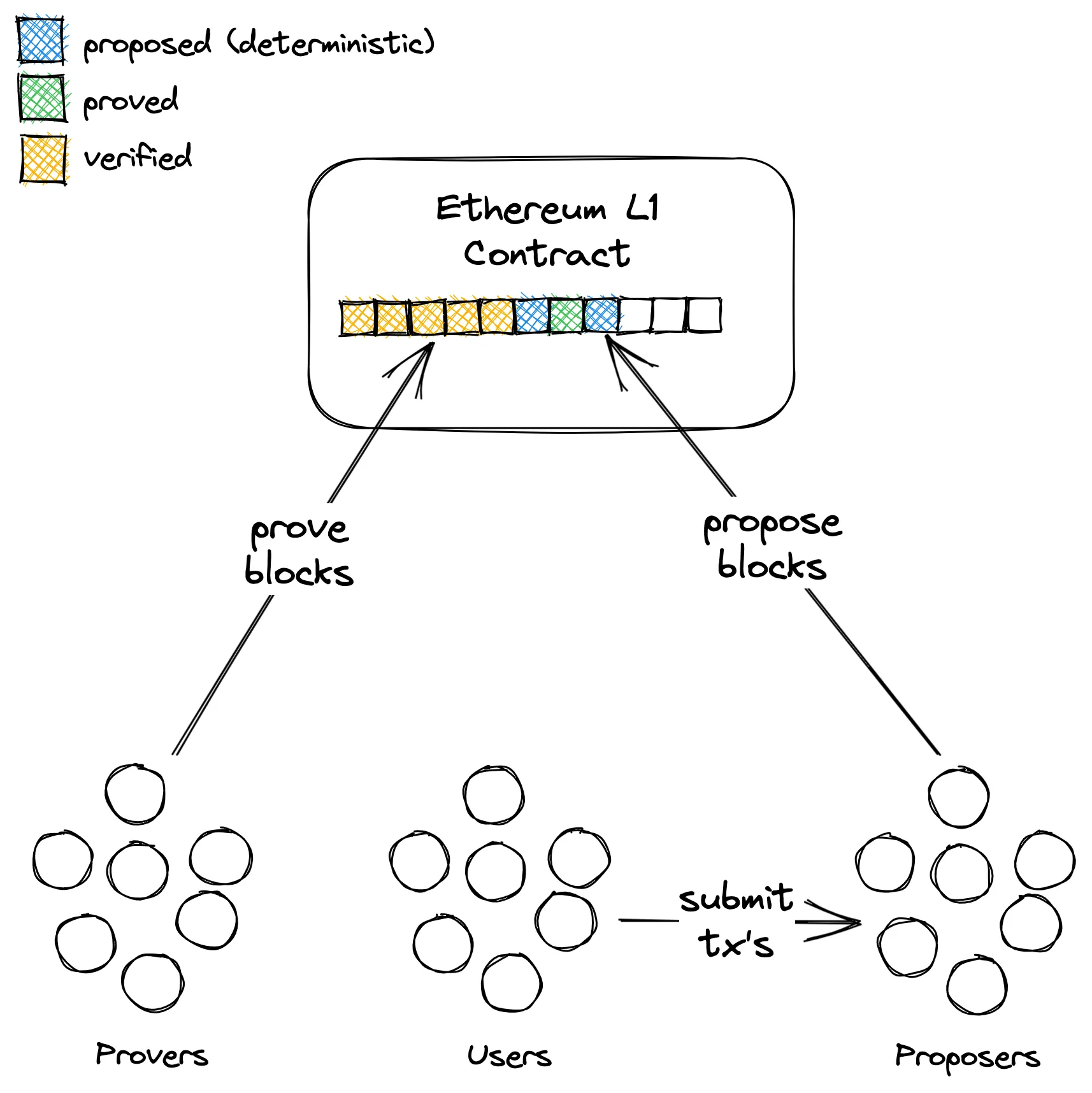Multi-proofs
Taiko Alethia supports multi-proofs, leveraging a combination of zkVMs, Trusted Execution Environments (TEEs) using SGX, and Guardian proofs. This multi-proof approach enhances security and robustness by reducing reliance on a single proving system.
For a deeper dive, explore:
- zkVMs in Taiko Blog Post
- Raiko Architecture Twitter Thread
Proving Taiko Alethia Blocks
Why is proving required?
Proving blocks ensures that the state transitions within the rollup are valid, providing certainty to bridges and other dependent systems that L2 transactions were executed correctly.
Prover Participation
- Anyone can permissionlessly run a node and prove blocks.
- Provers examine proposed blocks on the TaikoL1 contract, generate proofs, and submit them.
- The first prover with a valid proof of the correct state transition receives the proof reward.
- Rewards can be in ETH, ERC20 tokens, or even NFTs, depending on the implementation.
Verified Blocks and Parallel Proving
Block States
A block in Taiko Alethia progresses through three key states:
- Proposed (Initial state, pending proof submission)
- Proved (At least one valid proof exists)
- Verified (Proof is confirmed along with parent blocks)
Parallel Proof Generation
- Blocks are proved independently in parallel.
- For a block to be verified, its parent block must also be verified.
- Taiko Alethia verifies blocks in batches instead of sequentially.
- A verified block may have
verifiedTransitionId == 0due to batch verification.
Illustrative Stages
Proposed Blocks:

Proved Blocks:

Verified Blocks:

Off-Chain Prover Market (PBS-style)
Generating and verifying proofs on Ethereum L1 incurs significant computation costs. To optimize efficiency, Taiko Alethia introduces an off-chain prover marketplace inspired by Proposer-Builder Separation (PBS).
Key Challenges in Pricing Proofs
- Ethereum gas costs for proof verification are unpredictable.
- Proof generation costs do not directly correlate with gas fees.
- Hardware and software optimizations continuously reduce costs.
- Proof generation cost depends on the required proof latency.
How the Prover Market Works
- Proposers seek proof service providers through an off-chain marketplace.
- Provers bid by offering to generate proofs for a negotiated fee.
- Once an agreement is reached, the prover signs a cryptographic commitment.
- The proposer submits this proof on-chain.
- If the proof is not provided within the agreed timeframe, penalties apply.
Prover Types
- EOA Provers: Individual accounts that submit proofs.
- Prover Pools (Smart Contracts): Contract-based provers implementing:
IProverinterface (Taiko-defined)IERC1271interface (for signature verification)
Prover Incentives
- Provers must deposit TAIKO tokens as collateral per block.
- Failure to deliver a proof within the agreed time results in:
- 1/4 of the deposit going to the next prover.
- 3/4 of the deposit permanently burned.
- Successful proof submission returns the deposit.
Multi-Proofs: Enhancing Security & Redundancy
Taiko Alethia embraces multi-proof verification to minimize the risks of single-point cryptographic failures.
Why Multi-Proof?
- Cryptographic implementations are complex and evolving.
- Bugs in a single proof system could compromise security.
- Combining multiple proof systems enhances security through redundancy.
Taiko Alethia’s Multi-Proof Pipeline
- Converts execution layer instructions into arithmetizations.
- Supports multiple cryptographic backends:
- SuperNova
- Halo2
- eSTARK
- Does not rely on a single proving protocol.
SGX: Trusted Execution Environments (TEEs)
- Intel SGX is used as an alternative proof mechanism.
- SGX runs a light execution client that verifies state transitions.
- SGX signs execution results using an ECDSA signature, which is validated on-chain.
More Resources on Multi-Proof Security
- Taiko Alethia Multi-Proof Discussion Twitter Thread